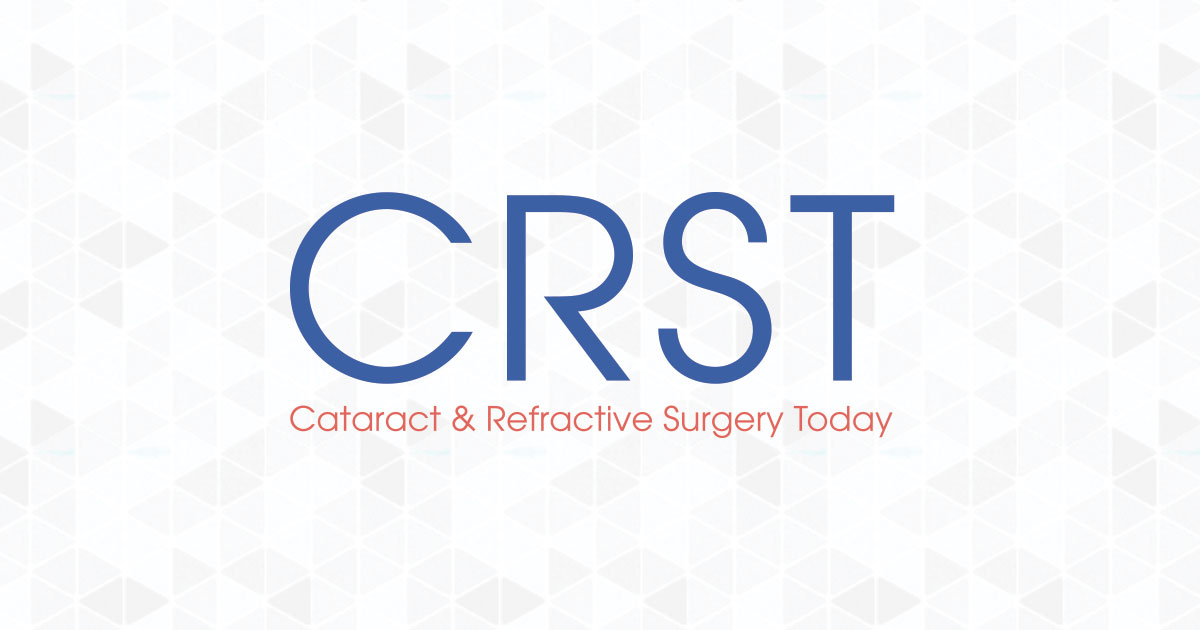Anterior segment surgeons are not accustomed to thinking of the operating microscope as an instrument, but increasing clinical experience with the OPMI Lumera (Carl Zeiss Meditec, Inc., Dublin, CA) has provided the author with a better understanding of certain features of this new technology. In 2007, Zeiss introduced a new illumination system with its Lumera operating microscope. Compared with the company's OPMI (output module interface) systems featuring a single light beam, the Lumera actually splits the light source into three separate illumination beams.
OPTIONS FOR ILLUMINATION
The traditional single OPMI illumination beam is aligned 2° off a truly coaxial viewing alignment (Figure 1). This near-coaxial orientation provides the red reflex familiar to all surgeons, yet it also provides enough of an oblique lighting angle to produce minor shadows around structures. These shadows are necessary to highlight depth and contrast, which provides three-dimensional detail of nuclear fragments or a sculpted nuclear trench.
With the Lumera, surgeons have two separate illumination beam angles that they can switch off separately or combine in differing proportions. The first is a 6° oblique field illumination, whereas the second is a separate coaxial illumination beam. The latter is subdivided into two separate coaxial light paths that are individually aligned with each microscope ocular (Figure 1). Retroillumination is thereby maximized, because each ocular's optical path has its own dedicated zero-degree light source—a system that Zeiss calls stereo coaxial illumination.
Surgeons can limit the oblique beam by progressively reducing the aperture of a shutter through which it must pass. A side-mounted "shutter" knob with an autoclavable cover allows the surgeon to adjust the relative brightness of these two illuminating components (field vs coaxial) during surgery (Figure 2). A tactile detent locates the knob setting where both beams are delivered at maximal intensity. Rotating the shutter knob in one direction gradually decreases the intensity of the oblique field component while the coaxial illumination remains 100% open. An adjustment in the opposite direction turns off the coaxial light while maintaining the field illumination. This adjustment knob therefore allows surgeons to vary and customize the proportions of the oblique and coaxial light illuminating the eye. Most surgeons will select a single adjustment setting that blends the two sources of illumination in a preferred proportion to provide both an excellent red reflex and visualization of depth and contrast inside the eye. Although an ophthalmologist might gradually increase the overall intensity of the microscope's illumination intraoperatively by way of a foot pedal button, there would generally be no need to adjust this shutter setting during routine cases.
When ocular conditions render a poor red reflex, however, the following shutter algorithm can significantly improve surgical visualization (Figure 3).
SHUTTER ALGORITHM TO IMPROVE A POOR RED REFLEX
Step No. 1
Perform the incision using a standard setting that combines coaxial and oblique illumination (Figure 3A).
Step No. 2
In order to maximize the red reflex, prior to the capsulotomy step, turn the oblique illuminating beam completely off with the manual shutter knob while leaving the solitary coaxial beam 100% open (Figure 3B).
Step No. 3
Use the foot pedal button to increase the brightness of the coaxial beam to compensate for the missing oblique component and intensify the retroillumination (Figure 3C). This step eliminates oblique light reflecting off the ocular structures that would otherwise visually wash out the red reflex. The result is a noticeably brighter "jack-o'-lantern" red reflex that provides vastly improved retroillumination in the setting of a brunescent lens, anterior cortical spokes, corneal opacity or edema, small pupils, and vitreous opacities such as asteroid hyalosis or hemorrhage. This maneuver makes it evident that corneal problems such as striae, band keratopathy, arcus senilis, dystrophic opacities, and graft interfaces not only decrease the transmission of the retroillumination, but they reflect enough backscattered light to effectively wash out the red reflex. Perform the capsulorhexis, hydrodissection, and hydrodelineation with this setting.
Step No. 4
Following hydrodelineation and the rotation of the nucleus, the red reflex is typically lost. At this point, it becomes very difficult to visualize surgical depth and the contours of nuclear fragments with a coaxial beam only, so turn the oblique source of illumination back on (Figure 3D). This maneuver highlights how oblique lighting allows surgeons to appreciate three-dimensional depth.
Step No. 5
Use the foot pedal button to decrease the overall brightness to compensate for restoring the oblique beam. Complete nuclear emulsification and the remainder of the case.
ADDITIONAL INFORMATION
Surgeons can take the second and third steps whenever they wish to enhance the red reflex as much as possible, such as when visualizing a posterior capsular tear (Figure 4).
They can independently switch off the coaxial light component with the shutter adjustment knob in order to reduce the transmission of light to the retina when a red reflex is not required. During anterior segment surgery, such situations might include the suturing of an incision and surgical steps involving the conjunctiva or sclera (eg, dissecting a trabeculectomy flap).
CONCLUSION
The surgeon's ability to employ solitary oblique or coaxial illumination independently, to blend these components in different proportions, and to vary the type of lighting as the case evolves is new and welcome. This flexibility enables anterior segment surgeons to change and customize the surgical illumination according to the varying needs of different surgical steps and different eyes. For cases in which the red reflex is poor, the author recommends varying the mix of lighting by means of the algorithm discussed herein.
David F. Chang, MD, is a clinical professor at the University of California, San Francisco, and is in private practice in Los Altos, California. He acknowledged no financial interest in the product or company mentioned herein. Dr. Chang may be reached at (650) 948-9123; dceye@earthlink.net.
